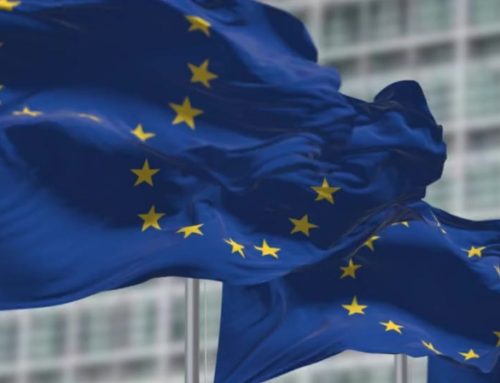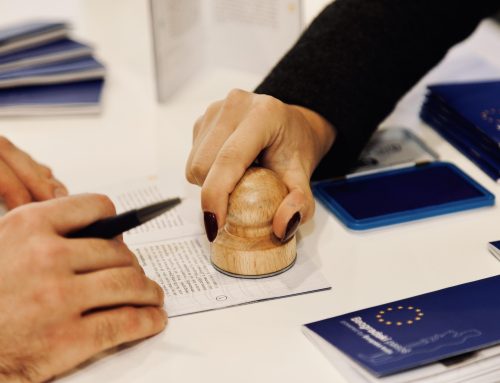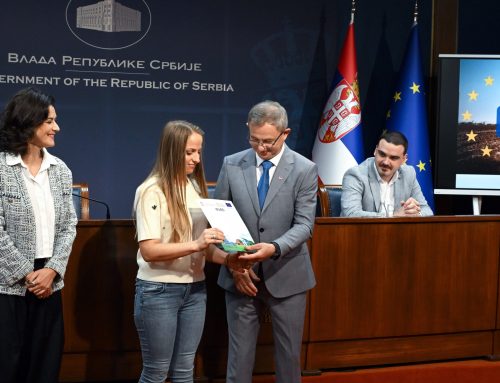Schoolchildren who sit in front of a television set for a few hours are generally not the most desirable sight, except when forced to do so by the COVID19 epidemic, and when they have an opportunity to follow distance learning on television. Around 770,000 students attending 3,774 elementary and secondary schools in Serbia are now, from their homes, attending classes that have been broadcast on the third program of Radio Television of Serbia (RTS) since March 17.
State-of-the-art teaching equipment, mainly donated by the European Union, also plays an important role in online teaching. Many schools have received new computers, interactive boards, projectors, video monitors and TV sets, laptops etc and have also renewed their musical instruments and sports equipment.
The European Union’s ongoing assistance to education in Serbia totals € 35 million, and since 2003, the EU has invested over € 100 million to reform education in our country.
This assistance involves not only the equipment for the preparation and delivery of teaching, but also, among other things, the training of teachers, the improvement of infrastructure, the modernization of curricula – all of which affect the increase of knowledge, skills and competences of people and the overall development of society and economy. Assistance covers all levels of education – from preschool, elementary, secondary and higher education to adult education.
EU contribution to the modernization of education in Serbia
Total assistance since 2003 → over € 100 million
- Schools and faculties reconstructed and equipped
- New kindergartens constructed across Serbia and more children involved in preschool education
- Support to inclusion of every child in quality and equitable education
- Job of pedagogical assistants introduced
- Support to more relevant and better-quality vocational education reform
- System of functional elementary adult education introduced
Video: RTS Planeta
Who is covered by European Union donations for the modernization of education?
- education authorities – Ministry of Education, Institutes, Councils
- their involvement ensures the sustainability of EU projects and assistance
- teachers / lecturers
- more than 40,000 teachers have undergone training to improve working methods
- training centers have been established and equipped – they are bases for the continuous development of teachers’ professional skills, where they can learn and test new teaching methods and equipment
- schools
- equipped with interactive whiteboards, projectors, laptops and IT equipment worth € 3.2 million
- students, teachers and university professors
- Serbia successfully participates in Erasmus + program
- Educational institutions and youth organizations have co-ordinated or participated in projects worth over € 83 million in 2014
- More than 8,000 teachers and students have participated in mobility programs in EU countries
- Over 3,000 students and teachers from other countries have been in Serbia





